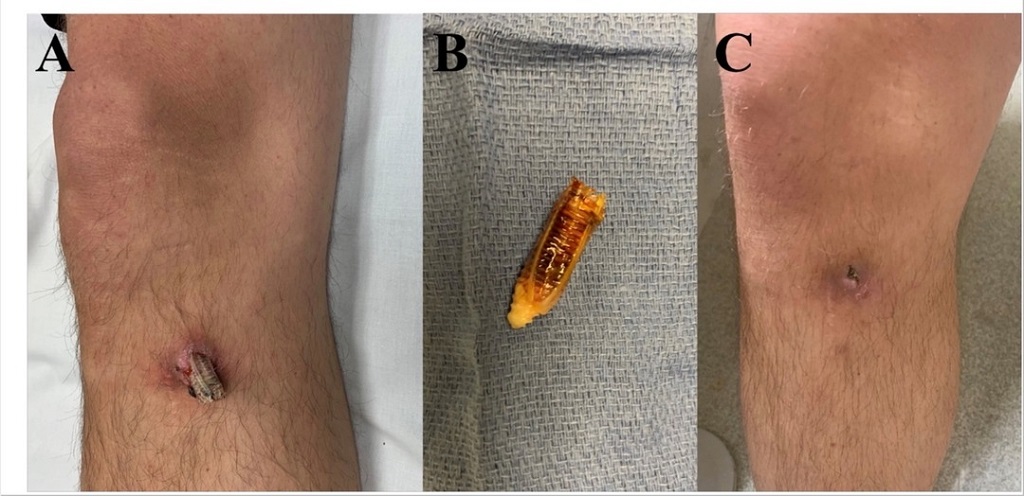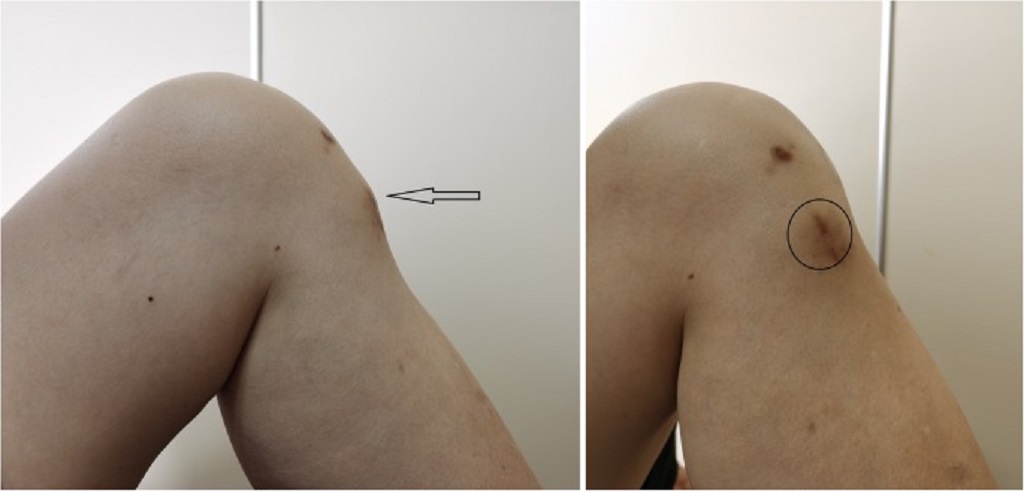What Happens When a Surgical Screw Comes Loose?

Imagine waking up one morning with a nagging pain in your back, a reminder of that spinal surgery you had a year ago. You brush it off as normal recovery discomfort, but the pain persists, maybe even worsens. Could it be that a surgical screw—one of those tiny metal anchors meant to stabilize your bones—has come loose? This scenario, while rare, can be alarming. Understanding what happens when a surgical screw comes loose, why it occurs, and what to do about it can empower you to take control of your health and recovery. In this article, we’ll dive deep into the causes, symptoms, risks, and solutions for loose surgical screws, providing you with clear, actionable insights to address this concern.
What Are Surgical Screws and Their Role in Surgery?
Surgical screws are medical-grade metal implants, typically made of titanium or stainless steel, used to stabilize bones during orthopedic procedures. They’re commonly employed in spinal fusions, fracture repairs, and joint reconstructions. These screws work alongside plates, rods, or other hardware to hold bones in place, allowing them to heal properly or maintain structural integrity. For example, in spinal fusion surgery, screws anchor vertebrae to a metal rod, preventing unwanted movement and promoting bone growth.
While these devices are engineered for durability, they’re not infallible. A loose surgical screw can disrupt the healing process, cause discomfort, or even lead to serious complications. Let’s explore why this happens and what it means for your recovery.
Why Do Surgical Screws Come Loose?
A surgical screw may loosen due to a variety of factors, ranging from biological to mechanical issues. Understanding these causes can help you recognize potential risks and discuss them with your healthcare provider. Here are the primary reasons:
1. Poor Bone Quality
Bone density plays a critical role in the stability of surgical screws. Conditions like osteoporosis or osteopenia weaken bones, making it harder for screws to stay securely anchored. In such cases, the bone may not provide a strong enough foundation, leading to screw loosening over time.
2. Mechanical Stress
Repetitive motion, heavy lifting, or trauma can place excessive stress on the surgical site. For instance, if you return to high-impact activities too soon after surgery, the screws may shift or loosen due to the strain. This is particularly common in spinal surgeries where the spine endures constant movement.
3. Infection
Post-surgical infections, though rare, can weaken the bone or tissue around the screw, compromising its stability. Infections may cause inflammation or bone degradation, creating an environment where screws can no longer hold firm.
4. Surgical Technique or Hardware Failure
While surgeons strive for precision, factors like improper screw placement, inadequate screw size, or hardware defects can contribute to loosening. For example, a screw that’s too short may not grip the bone effectively, increasing the risk of movement.
5. Non-Union or Failed Fusion
In procedures like spinal fusion, the goal is for bones to fuse together over time. If fusion doesn’t occur (a condition called non-union), the hardware, including screws, may bear more stress than intended, leading to loosening or even breakage.
Symptoms of a Loose Surgical Screw
How do you know if a surgical screw has come loose? The symptoms can vary depending on the location of the screw and the extent of the loosening. Here are some common signs to watch for:
- Persistent or Worsening Pain: A dull ache or sharp pain at the surgical site, especially during movement, could indicate a loose screw. This pain may differ from the expected post-surgical discomfort.
- Swelling or Inflammation: Localized swelling or redness near the surgical area may suggest irritation caused by a loose screw or an associated infection.
- Reduced Mobility: If the screw is in a joint or spine, you might notice stiffness, limited range of motion, or difficulty performing daily activities.
- Unusual Sensations: Some patients report a “clicking” or “popping” sensation, which could indicate hardware movement within the body.
- Visible Hardware Issues: In rare cases, a loose screw may cause a noticeable bulge under the skin or even protrude, though this is more common with superficial implants.
If you experience any of these symptoms, contact your surgeon or healthcare provider promptly. Early detection can prevent further complications.
Risks and Complications of a Loose Surgical Screw
A loose surgical screw isn’t just an inconvenience—it can lead to significant health issues if left unaddressed. Here are some potential complications:
- Bone Damage: A loose screw can erode or fracture surrounding bone, weakening the surgical site and delaying healing.
- Failed Surgery: In procedures like spinal fusion, a loose screw can prevent proper bone fusion, leading to instability and the need for revision surgery.
- Infection Spread: If an infection is the cause, a loose screw may exacerbate the spread of bacteria, potentially leading to systemic issues.
- Nerve or Tissue Damage: A displaced screw could press on nerves or soft tissues, causing pain, numbness, or even neurological deficits.
- Hardware Failure: A loose screw may cause other components, like plates or rods, to fail, compromising the entire surgical construct.
These risks highlight the importance of monitoring your recovery and seeking medical advice if something feels off.
Diagnosing a Loose Surgical Screw
If you suspect a loose screw, your doctor will likely use a combination of methods to confirm the issue:
- Physical Examination: Your surgeon will assess your symptoms, range of motion, and any visible signs of complications.
- Imaging Tests: X-rays, CT scans, or MRIs can reveal the position of the screw and any associated bone or tissue damage. These tests help determine if the screw has shifted or if the bone has failed to heal properly.
- Blood Tests: If infection is suspected, blood work can identify markers of inflammation or bacterial presence.
Once diagnosed, your healthcare team will develop a treatment plan tailored to the severity of the issue and your overall health.
Treatment Options for a Loose Surgical Screw
The approach to treating a loose surgical screw depends on the cause, symptoms, and extent of the problem. Here are the most common options:
1. Conservative Management
If the loosening is minimal and not causing significant symptoms, your doctor may recommend non-surgical interventions, such as:
- Rest and Activity Modification: Avoiding strenuous activities can reduce stress on the surgical site, allowing the bone to stabilize.
- Physical Therapy: Targeted exercises can strengthen surrounding muscles and improve stability without surgery.
- Pain Management: Medications or injections may help control discomfort while the body heals.
2. Revision Surgery
In cases where the screw causes pain, instability, or other complications, revision surgery may be necessary. This could involve:
- Replacing the Screw: A larger or differently positioned screw may be used to achieve better stability.
- Bone Grafting: If poor bone quality is the issue, a graft may be added to strengthen the area.
- Hardware Removal: In some cases, if the bone has healed sufficiently, the loose screw and other hardware may be removed entirely.
3. Treating Underlying Issues
If an infection or condition like osteoporosis is contributing to the problem, your doctor will address these first. Antibiotics, bone-strengthening medications, or other therapies may be prescribed to support recovery.
Preventing Loose Surgical Screws
While not all cases of loose screws can be prevented, you can take steps to minimize the risk:
- Follow Post-Surgical Guidelines: Adhere to your surgeon’s instructions regarding activity restrictions, weight-bearing limits, and recovery timelines.
- Maintain Bone Health: A diet rich in calcium and vitamin D, along with weight-bearing exercises (as approved by your doctor), can strengthen bones.
- Monitor for Symptoms: Report any unusual pain, swelling, or mobility issues to your healthcare provider promptly.
- Attend Follow-Up Appointments: Regular check-ups and imaging can catch potential issues early, before they escalate.
Related Topic: Calculate Customer Lifetime Value for an E-Commerce Store
When to Seek Medical Attention
If you suspect a loose surgical screw, don’t wait to seek help. Contact your surgeon immediately if you experience:
- Severe or worsening pain at the surgical site
- Signs of infection, such as fever, redness, or warmth
- Loss of mobility or neurological symptoms like numbness or tingling
- Any visible changes, such as swelling or a protruding implant
Early intervention can make a significant difference in your outcome, preventing long-term complications and ensuring a smoother recovery.
Related Topic: Getting Started with Arduino
Conclusion: Take Control of Your Recovery
A loose surgical screw can be a daunting prospect, but understanding the causes, symptoms, and treatment options empowers you to act swiftly and confidently. Whether it’s poor bone quality, mechanical stress, or an underlying infection, addressing the issue early with your healthcare provider can prevent complications and get you back to living your life fully. If you’re experiencing persistent pain or other concerning symptoms after surgery, don’t hesitate—reach out to your doctor for an evaluation. Have you or someone you know dealt with a loose surgical screw? Share your experience in the comments below, or consult with your healthcare team to ensure your recovery stays on track.

